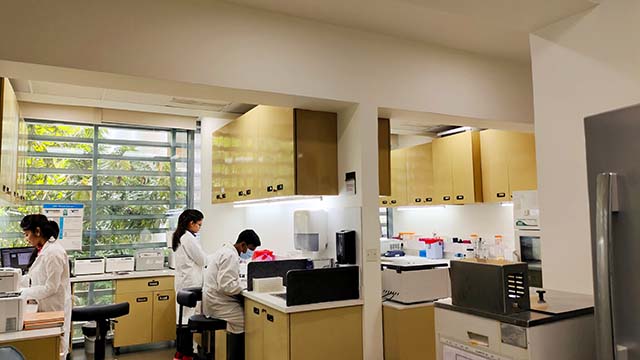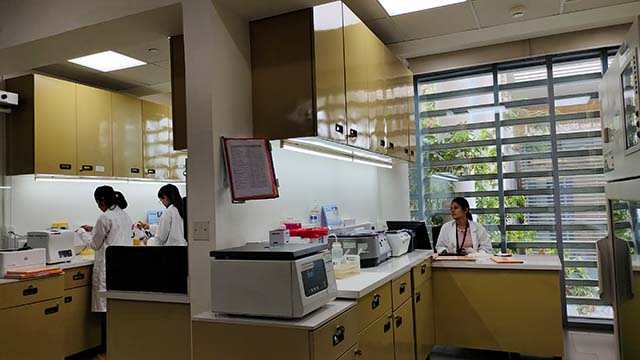Products and services
Diagnostic services:
ABO and Rh grouping
This test is for ABO and RhD determination of an individual. This is based on the principle of antigen antibody reaction.
Subgroup study
Some individuals have less ABO antigens on red cells that cannot be detected in usual blood grouping methods. For detecting these groups, medically terminated as ‘subgroups’; some specialized techniques (adsorption-elution technique, saliva study, etc.) are used.
Red cell antibody screening (ICT or IAT)
This is a test performed to detect presence of any free antibody in the serum/plasma of a patient which might cause destruction of red cells (hemolysis) inside body.
Panel for red cell antibody identification
This test helps to identify the specific antibody causing the hemolysis. It is done when the antibody screening test is positive.
Antibody titration
This test is done to predict the amount/concentration of an antibody present in plasma of an individual. Titrations are performed by conventional tube technique at saline phase and AHG phase (after DTT treatment) for IgM and IgG, respectively.
Full red cell antigen typing
There are antigens that are called minor blood group antigens such as extended Rh (C, c, D, E, e); Kell (K); Duffy (Fya, Fyb); Kidd (Jka, Jkb); MNS (M, N, S, s); etc. Full antigen typing is done to detect these minor blood group antigens.
DCT or DAT
When a patient develops antibody to a red cell antigen, the antibodies first coat the red cells. This coating of red cells can be tested by the direct antiglobulin test (DAT) which is also known as direct coombs test (DCT). This test is indicated to diagnose autoimmune hemolytic anemia (AIHA), delayed hemolytic transfusion reaction (DHTR), hemolytic disease of fetus and newborn (HDFN) etc.
AIHA panel
Once DAT is positive in a suspected patient with an immune-hemolysis, further evaluation in a stepwise approach is performed to identify laboratory and clinical evidence of hemolysis and then the immune nature of hemolysis is determined by battery of tests that includes sub-classification of DAT, DAT dilution, adsorption, acid elution etc. These are all included in the AIHA panel.
Cold antibody titration
Some antibodies cause destruction of RBCs at cold temperature. These are called cold antibodies. When present in high titers these can lead to Cold agglutinin disease. This test is performed to estimate the concentration of such cold antibodies along with the thermal range and their specificity.
Pre BMT cross-match
Patients with different hematological diseases may undergo allogeneic bone marrow transplantation (BMT) with a related or unrelated HLA matched donor. In pre-BMT cross-match, the patient and the donor’s blood group, extended red cell phenotyping, DAT, antibody screening and compatibility were checked.
Patients on Daratumumab
Di-thio-threitol (DTT) treated red cells are used for pre-transfusion testing or red cell genotyping is performed in these patients to predict the red cell phenotype.
Platelet antibody screening and cross-match
Transfusion dependent patients with underlying hematological diseases; may develop antibody against platelet antigens (HLA or HPA). In platelet antibody screening using the solid phase assay patients can be screened for these antibodies. Once the screening becomes positive, platelet cross-matching is performed for necessary platelet transfusions in these patients.


